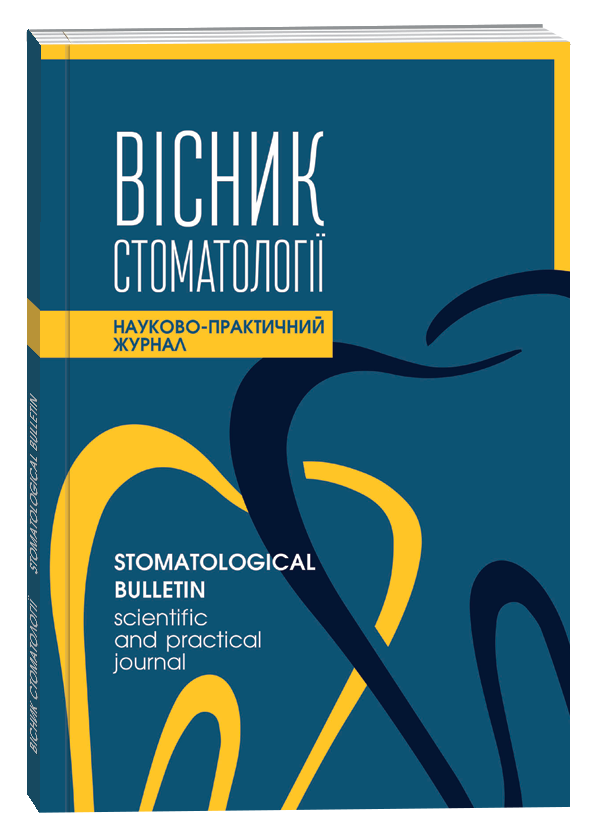THE EFFECT OF MINEROL ON THE PERIODONTAL TISSUES OF RATS ON THE BACKGROUND OF DENTAL CARIES MODELING
DOI:
https://doi.org/10.35220/2078-8916-2022-45-3.1Keywords:
dietary supplement, prevention, biochemical markers, caries, rats.Abstract
The high incidence of dental caries in children, despite the presence of a large number of preventive measures, indicates the need to develop new effective methods of treatment and Prevention. Until now, the impact of a cariogenic diet on rats against the background of the use of a therapeutic and preventive complex, which includes the dietary supplement “Minerol” and toothpaste “Minerol”, has not been evaluated. The research is relevant for modern pediatric dentistry. The aim of the work was an experimental assessment on rats of changes in the biochemical indicators of hard tissues on the background of a cariesogenic diet of teeth under the influence of therapeutic and preventive measures. Materials and methods. The experiment was conducted on 30 one-month-old female laboratory rats. The animals were divided into three groups, 10 rats each: 1 – intact on the standard vivarium diet; 2 – cariogenic diet; 3 – on the background of a carious diet and preventive measures. The duration of the experiment was 50 days. The animals were removed from the experiment by total heart bleeding. For further studies, the jaws with teeth were selected to count the number and depth of carious cavities, the pulp in which the activity of acid and alkaline phosphatases was determined. Research results. The rats ' consumption of a caries-free diet for 50 days contributed to the development of an active carious process. Thus, the number of carious cavities in the teeth of the 2nd group of animals increased by 2.7 times (p<0.001), and their depth even more-by 3.7 times (p<0.001). Conclusion. Experimental studies of the effectiveness of the complex established its very high preventive effect in relation to pulp phosphatases, i.e. to prevent the violation of the mineralizing function of the pulp of the teeth of animals that were in cariogenic conditions. The conducted research is the basis for the development of a treatment and prevention complex for children of primary school age with dental caries based on the preparations used in the work.
References
Цимбалистова А.В., Трифонова Б.В., Копытова А.А. Стоматология славянских государств: сборник трудов по материалам VIII Международной научно- практической конференции. Белгород: ИД «Белгород» НИУ «БелГУ», 2015. 386 с
Борисенко Л. В., Стародубцев Е. Г. Формула здоровья. Киев, 2015, 56 с.
Макаренко О. А., Хромагіна Л. М., Ходаков І. В. Методи дослідження стану кишечнику та кісток у лабораторних щурів. Довідник. Одеса, 2022, 81 с.
Макаренко О. А. Как защитить костную ткань. Одесса: КП «Одесская городская типография», 2013, 52 с.
Шаковец Н. В. Факторы возникновения и развития кариеса зубов у детей раннего возраста. Педиатрия. 2011. № 2. C. 5-8.
Ковальчук В.В. Патогенетическое обоснование профилактики раннего детского кариеса у детей непромышленного региона : дис… канд. мед. наук: 14.01.22. Одесса, 2016. 162 с.
Біденко Н. В. Ранній карієс тимчасових зубів: перспективи вирішення проблеми. Клінічна стоматологія. 2011. № 1 – 2. С. 64−68.









